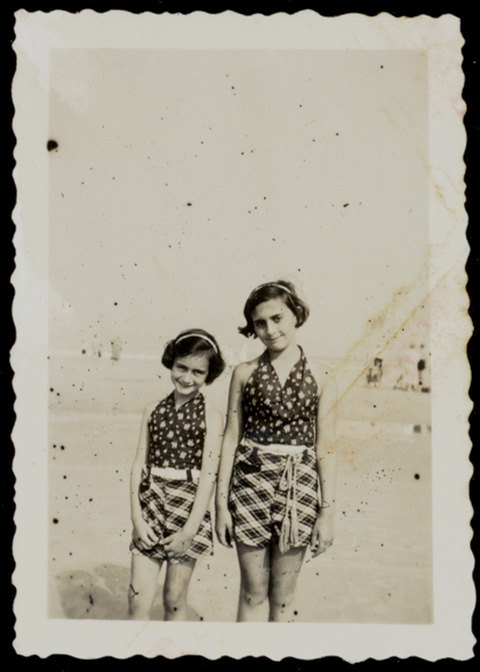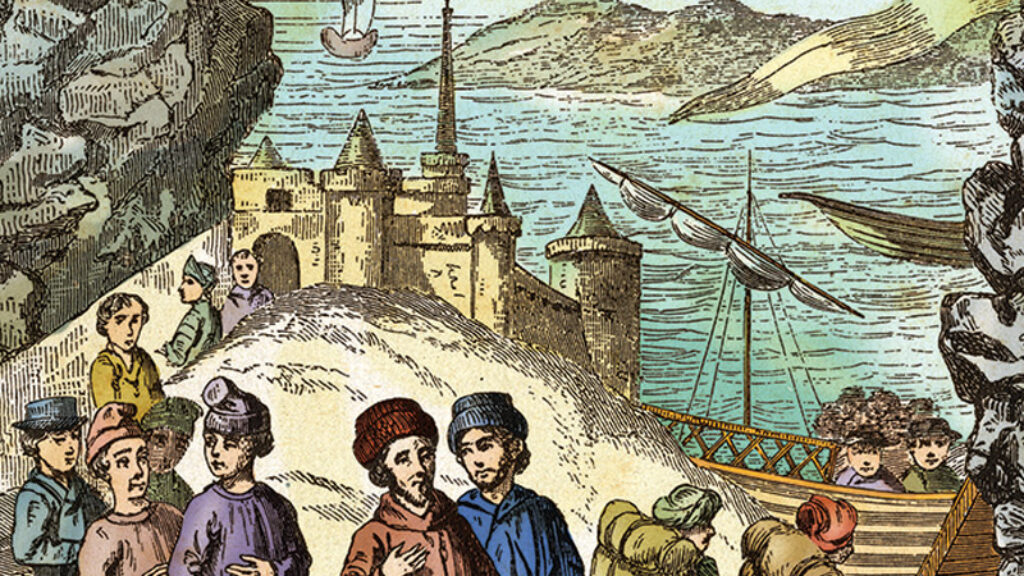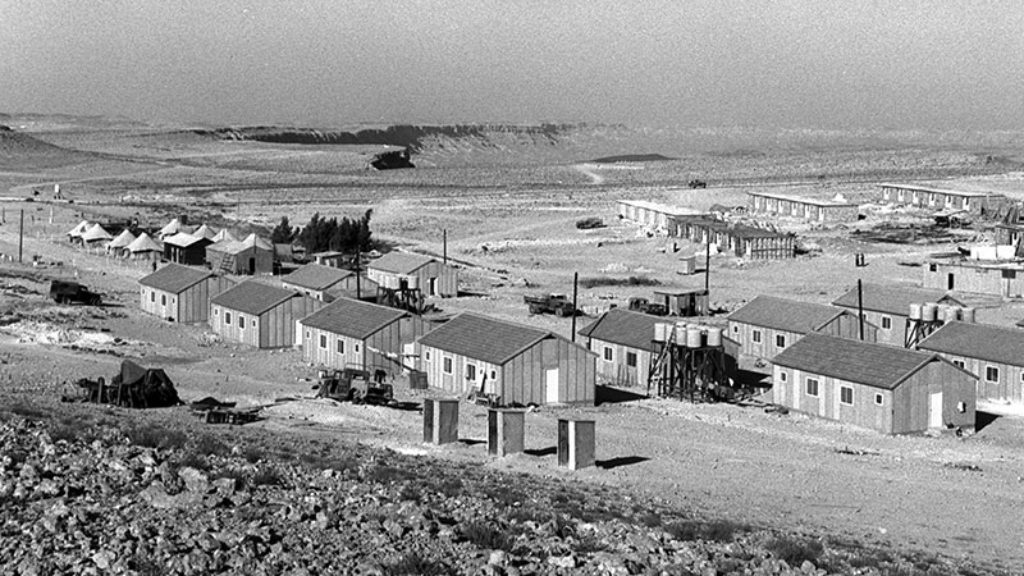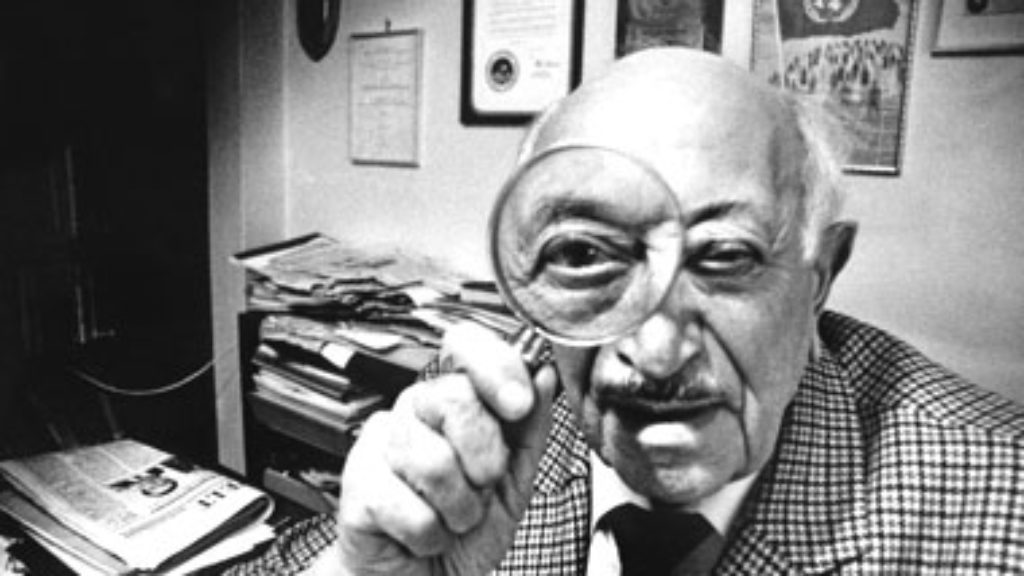Who Owns Margot?
These are exciting times for those of us who grew up reading comics and Asimov before “graduating” to literature. Some of the most interesting fiction now being written includes elements from popular genres: Jonathan Lethem’s sad superheroes, Lev Grossman’s elitist magicians, and Gary Shteyngart’s future world, in which jeans have become transparent, but Jewish parents are the same as ever. At their best, these works bring complex characterization and multilayered imagery into the imaginative realms of genre and other “low” forms.

The possibilities offered by speculative fiction—the fiction of what might have been—often lead Jewish writers to a rewriting of the events of the Holocaust. In Michael Chabon’s The Yiddish Policemen’s Union, millions are fictionally saved, given temporary refuge in Alaska. More often, though, authors pull single victims safely out of history. In The Ghost Writer, Philip Roth speculated upon what kind of adulthood Anne Frank might have had (as has Shalom Auslander more recently). Ellen Feldman’s incandescent novel The Boy Who Loved Anne Frank does the same for Peter van Pels. And now Jillian Cantor has written Margot, imagining the life of Margot Frank had she survived Bergen-Belsen.
It is not surprising that we return so often to Anne Frank and those close to her. In Cantor’s less than felicitous but certainly memorable phrase, Frank is a “Holocaust icon.” Why Anne Frank? In the brilliant essay “Who Owns Anne Frank?” Cynthia Ozick argued that the answer lies in both the power of her writing and the malleability of her image. The Diary of a Young Girl is keenly observant, darkly humorous—and deceptively accessible. The shallow analogies we can draw between our lives and Anne’s have allowed “a world that made of [the Diary] all things, some of them true, while floating lightly over the heavier truth of named and inhabited evil.” It is easy to misread Anne’s diary, to think that because we know what it is to be young and misunderstood, we understand the Holocaust and its victims. It is easy to identify with the smiling girl in the photograph and to drape her in comforting sentiments that are easily disproven by the facts of her life and death.
We cast Anne Frank in our own image. In The Ghost Writer, an august judge sees Anne Frank as a beacon of Jewish community-minded probity, whereas the young protagonist Zuckerman sees her as the ultimate assimilationist. Some of that can’t be helped—it is human nature to see ourselves in others. Some of it, however, relies on a willful blindness.
Unfortunately, now Anne’s sister, Margot, has been subjected to the same kind of treatment. As I read Jillian Cantor’s new novel, I encountered a very different Margot than the one who appeared in the Diary and her friends’ recollections. The historical Margot had many interests and studied widely, including five different languages and literatures, advanced mathematics and science, ancient and modern history, as well as practical subjects, such as shorthand and bookkeeping. According to the Diary, in her spare time, Margot read “about everything, in particular about religion and medicine.” Margot planned, after the war, to become a midwife in Palestine. She probably would have done well; her friends and the Diary describe a kind, levelheaded young woman.
Of that Margot Frank, Cantor has retained little, mainly just her knowledge of shorthand and Anne’s teasing description of her as a “paragon of virtue” (two facts that appear early, on consecutive pages, in the Diary). The fictional Margot alludes to her former scholarship and religiosity, but seems to have retained little of either. There are few references to any books besides her sister’s diary, few references to Judaism besides candle-lighting, and no mention of Israel at all.
Margot’s current interests include eye color. If she isn’t remembering that Peter van Pels’ eyes were “blue, like the sea,” she is noticing (or re-noticing, many, many times) that the eyes of her American love interest are “gray-green.” This thirty-three-year-old woman experiences what appear to be novel and intriguing sensations of “warmth” in the presence of these men and their eyes. Another of her interests is romantic rivals, both real and imagined. Watching the film version of the Diary, she is most upset not by its lack of realism, nor by painful memories it has triggered, but because it is Peter and Anne kissing in the final scene: “And Margot, she is nowhere to be found.”
In Cantor’s reimagining, Margot’s past includes a secret romance with Peter van Pels. Far from midwifery in Palestine, this novel’s Margot dreamt of wifery in Philadelphia, where she and Peter had planned to reunite. The book is set in the Philadelphia of 1959, where Margot has taken on the non-Jewish name “Margie Franklin,” concealed her roots, and found work as a legal secretary in a Jewish practice.
As I read on, I realized that Margot’s closest literary cousins were to be found not in speculative fiction, but in romance novels, where the focus is on love and the endings are happy. Several tropes of the romance genre come into play in the novel: a romantic rivalry with a scheming sister (in this case, with Anne, which gave me pause, as the fictionally scheming rival was not yet sixteen); a mousy secretary in love with her boss; and a hidden identity that, once revealed, makes the love interest all the more enamored.
Although Margot/Margie is studying to be a paralegal (a slight anachronism in 1959, if I am not mistaken), she doesn’t seem to have much interest in her work outside of the opportunity it provides to see her boss and crush, Joshua Rosenstein. A workplace discrimination suit brought by an Auschwitz survivor inspires excitement and ambivalence, but not for the reasons you might expect:
As I wait for Joshua to come out of his office, just before noon, my cheeks grow warm at the notion of our upcoming lunch, just the two of us. Then I find myself thinking, That was how it began with Peter and me, lunch. And it is confusing how my mind wanders to Peter, when I am so eagerly awaiting the time with Joshua.
The men in her life are little more than points in a romantic triangle. Peter is a lover from her past; Joshua represents her potential romantic future; otherwise, they are very similar. They both complain about their parents in rather adolescent terms (granted, Peter is an actual adolescent at the time). They both woo Margot with clichés (“You’re really beautiful, even if you don’t know it,” says Peter, anticipating a One Direction song of two years ago). And, of course, they both have nice, albeit differently colored, eyes.
Other characters function mainly as catalysts to Margot’s love life. Even Peter’s cat, Mouschi, best known in the Diary for his urinary antics, gets dragged in to do his bit, plopped in Margot’s lap so that Peter can say, “He knows that you are special,” and Margot can experience exciting sensations of warmth. Bryda, the Holocaust survivor who’s bringing the discrimination case, and who presumably might have more on her mind than her lawyer’s love life, re-enters the novel at the end to say in her broken English, “I see way he look at you . . . You more than secretary.”
My favorite parts of Margot were those not tethered to the marriage plot. Some of Margot’s early reactions to American acquaintances and popular culture, including the film Some Like It Hot, are well-rendered. Bryda, the bitter, canny plaintiff of the discrimination case, seemed like an interesting character when she was first introduced. Some descriptions of the camps are haunting, although the impact of several startling phrases diminishes with their repetition. Edith Frank, in Margot’s memory, says some sensible and character-appropriate words.
Ultimately, though, the drive toward a happy ending takes priority, and the book begins knocking off obstacles. One such obstacle is Ezra Rosenstein, Joshua’s father and boss, whose focus on earnings prevents Joshua from pursuing cases that “help people.” So, Ezra sickens and dies. Joshua and Margot open a practice that matches Joshua’s ideals, where he wears shirts that match his eyes. Joshua also breaks off his engagement to the brassy, snobby Penny, a romantic rival out of a Taylor Swift video. (Apparently, the wedding was all Ezra’s idea.) The queasy-making historical irony—that their happiness results from the death of a purportedly money-obsessed Jew—eludes the blithe pair. The trauma of Holocaust survival poses another obstacle and is dispensed with equal efficiency.
United lovers, a happy ending: Margot certainly meets the basic genre requirements for a romance novel. The trouble is, it is not being presented to readers as a romance, but as serious literary fiction. Advance blurbs mention its truthfulness and psychological subtlety. Yet, this novel houses its romantic hero on Knight Street, repeatedly, and nonsensically, uses skipping to denote childhood innocence (Cantor imagines that Anne and Margot, at ages twelve and fifteen, are often skipping home from school), and gives everyone the same stilted and melodramatic speaking style. As for psychological insight: Of her father’s decision to publish the diary, Margot says:
If nothing else, Father is a good businessman, and when he realized he could get the diaries published, make money, profit from the books, I am sure he thought, Why shouldn’t I?
(In reality, of course, sixteen English-language publishers rejected the Diary before it finally sold. Selling a victim’s story to a determinedly postwar world was not the quickest way to make a buck.)
In ordinary life, someone who places romance above all else may seem merely neurotic. In times of war, that person seems deranged, and this novel’s “romantic” approach to the achterhuis residents distorts their characters. When the Green Police come to the door, the narrative focus is on a fictional plot twist that could have been lifted from a soap opera: Anne discovers Peter and Margot in bed together. (In Cantor’s invented version of events, Peter was two-timing the sisters.) Anne then becomes hysterical, screaming at the police and refusing to leave. In reality, needless to say, Anne never came close to jeopardizing her family’s safety like that. There are more important things than romance, as she well knew.
To some, including perhaps Cantor herself, the inclusion of terrible historical events makes Margot more than a romance novel: It’s the Holocaust as ballast, with romance as bait. In this view, the sugary love story is there to help the lessons of the Holocaust go down easily. But there is very little to be learned about human suffering from a book in which no one is fully human. There is a reason why most genre fiction is so stylized, its characters subservient to plots. To put it starkly, conventional genre fiction tries to offer readers an escape from unwieldy and unhappy human realities, whereas literature mostly tries to do the opposite. An author does, ultimately, have to choose between the two.
As lines between genre and literary fiction blur, some writers seek the gravitas conveyed by serious subjects without being willing to grapple with the messiness of actual events and humans. Unfortunately, for every genre-bending Art Spiegelman, there is someone who learned precisely the wrong lesson from Maus: that it is possible to depict those who suffered and died in the Holocaust as cartoon characters.
Suggested Reading

The Court Jew Who Hated Kings
In July 1492, three months after Spain published its edict of expulsion, Abravanel sailed with tens of thousands of other refugee Jews to Italy, where the history of Sephardi Jewry and its most illustrious leader resumed on somewhat friendlier grounds.

Seventy Years in the Desert
At the 1965 International Bible Contest, David Ben-Gurion posed some of the questions. He also asked two to the entire audience: “How many of you are ready to make aliyah to the Land of Israel?” And then, more specifically, “How many of you are ready to come and live with me in the Negev?”
Moses, Aaron, and Pharaoh Walk into a Bar: Passover in the Union Army
Yankee ingenuity at Passover: how one regiment made a Seder in the midst of the Civil War.

Simon Wiesenthal and the Ethics of History
Was Simon Wiesenthal an intrepid hunter of mass murderers? Or was he in fact more of a charlatan than a hero? Tom Segev's new biography of the most successful—and controversial—Nazi-hunter raises more questions than it cares to answer.
Comments
You must log in to comment Log In